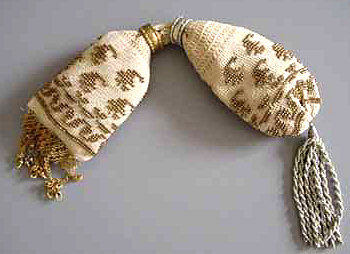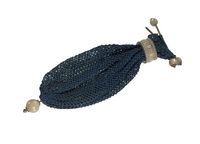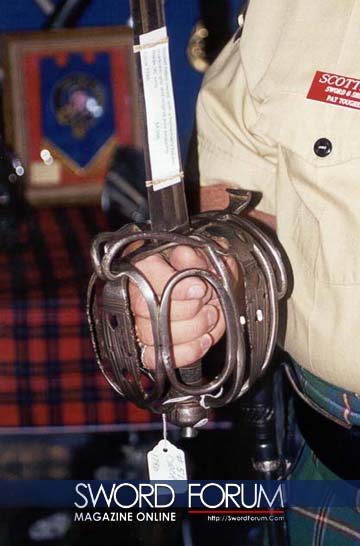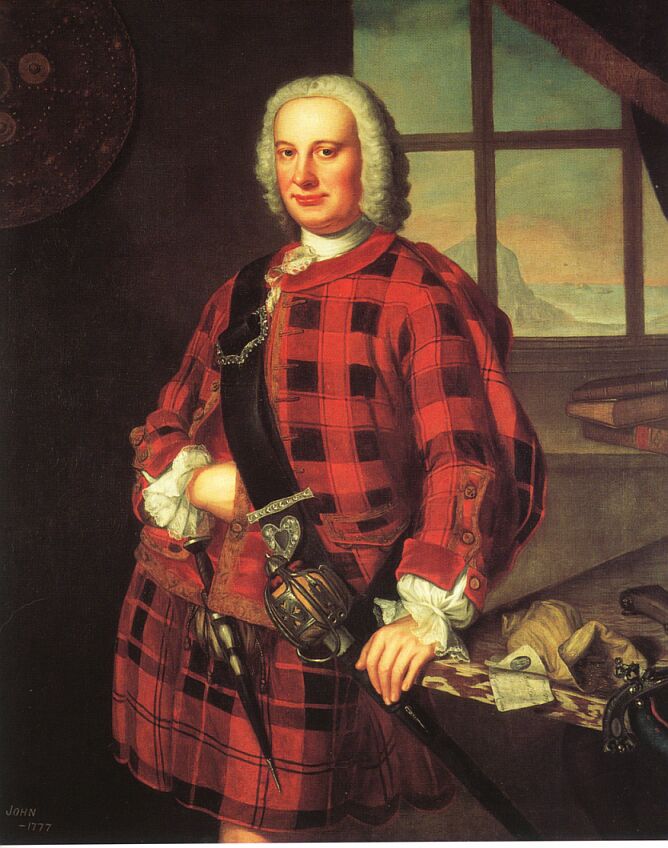-
Posts
4,862 -
Joined
-
Last visited
-
Days Won
15
Content Type
Profiles
Forums
Blogs
Gallery
Events
Store
Posts posted by peter monahan
-
-
I've wondered about these-I bought a couple of blanks from an antique dealer back in 1974. What were they-replacements?
It's been 20 years since I collected these, but my recollection is that replacements were named too and that the unnamed Stars probably represent unissued stock, eventually sold off by HMG as scrap / surplus.
My tuppence worth
0 -
So their purses didn't match their shoes?

I don't think Horatio was that kinda fellah! At least, not according to Lady Caroline Lamb.
 0
0 -
Found one example from 1860-187o according to the vendor, but who knows how long they hung on in rural areas? I'd doubt if it dates as late as the Second War though. Just my feeling.
Here are 2 examples. The second belonged to Lord Nelson



 0
0 -
Here we are: 'stocking purse', 'ring purse' or - my favourite - 'miser's purse'
"Small knitted, netted or crocheted silk or cotton coin purses are also characteristic of this period and were known as stocking purses, or 'miser' purses. By mid century these had metal fastenings and the whole was often made of a delicate metal chain, which supported sovereigns and half sovereigns, hence the term 'sovereign purse'." (Hampton Museum)
0 -
Kev
This type of purse was quite common in the early 19th century - 1800 on - but I've no idea when they stopped being used. The net knitting and rings are pretty diagnostic and when I can recall the name of them I'll look up some examples. German, English, French ??? Who can say, unless the lettering style is a help.
Peter
0 -
Will dig out the PRO-exchavated notes and references later today and fill in gaps (pondering an OMRS article on the origins of the WWII campaign medals).
In brief: It was a simple desire to issue the medals as quickly as possible, for maximum post-war morale benefit, and the realization dawned that naming the medals would slow down their distribution.
Ah! Come the dawn. Thanks Ed, that makes perfect sense.
Peter
0 -
Above: John Campbell, banker, 1740. As you can see, the heart appears both as an ornament on the baldric and as cut-outs on the sword hilt. Many, perhaps most of the basket hilted broadswords I've been able to view have the hearts, but by no means all.

This one, has vaguely heart-shaped openings but not true hearts. Again, My personal theory - and that's all it is - is that the shape was attractive, caught on and is now considered 'standard' mostly because that's what peole saw. The fact that the British Army eventually authorized Basket Hilts for some regiments and that they had heart shapes would of course have influenced people to believe that they were a necessary part of the swords!
 0
0 -
-
Helen
Not a Scot nor a Celtic specialist but there don't seem to be really obvious links between Scots and hearts, other than the obvious 'love' symbol common to most of Western Europe from the Middle Ages. A double heart with a crown on top is distictively Scots, as the heart held in 2 hands ('cladah') is Irish but nothing else leaps out when one searches "Scots symbols".
On the other hand, the heart appears in a number of places where it seems to serve no particularly significant purpose other than aesthetics. For example, some uniforms of the British Army from the "Rev. War" period (1770-1790) have heart shaped decorations on the turnbacks of the coats: small patches sewn on, in contrasting colours, to two corners of the 'tail' of the tunic. While these do serve as reinforcements at a stress point, the shape is unrelated to function: a small square or circle would do as well, so my inference is that they simply present a pleasing design given the shape of the coattail and have no other significance.
So, my farthing's worth is that the heart cut-outs probably have no special significance other than as decorative features. Of course, they also lighten the sword hilt but again, so would square, diamond or round cut-outs. Probably, the makers 'just liked hearts'.
Peter
0 -
Yes, the clasps are the easy part, I think. But has anyone ever looked at the records to confirm our guesses? I wonder if this guess is like the prevailing undocumented guess as to why WWII medals were not named: Finances (which is wrong, by the way).
Ok, Ed. I'll bite. Why did was it decided not to name the WWII medals? Or is this something I should know already? Because, qute honestly, when I heard the "cost" explanation, I'm afraid my native cynicism vis-a-vis governments kicked in, I thought "That figures!
 " and thought no more about it.
" and thought no more about it.Peter, an earnest seeker after knowledge
 0
0 -
Yes, that would be a repro. I fear. The Royal Regiment of Wales sells repors. at L18.00 each - presumably due to the Isandalwhana connection. Sorry

Peter
0 -
To add my fourpenneth - these belts are nearly always allied abdges and not German. Theyw ere a record of an old soldiers service with the badges and buttons collected from his own side and not the eneny. Hate belt is an ebay generated term designed to sell to the unwary.
Alan
I couldn't agree more! I've seen - not lately, mind - a number of British leather belts (pre-WWI) studded with brit badges and the explanation was always 'from units the wearer served alongside", often in India. Or met in the pub, or rolled after a punch-up. I strongly suspect that these so-called 'hate belts' are just a version of same: souvenirs of service puffed up to naive buyers by unscrupulous dealers or simply the product of good yarns. How else to explain the ones with buttons and badges from both sides? Did the anonymous 'killer' bag a Frenchman by mistake
Yes, souvenirs were taken by both sides but, leaving aside the whole 'wouldn't dare wear it in case of capture' argument, who'd stop fighting/ducking/advancing long enough to strip enemy dead ? Tench raids were by definition 'in and out': nasty, brutish and short. It would take a real nutter, IMHO, to stop in the midst of that lot for buttons!
My thrupence 'orth
Peter
0 -
The red and blue patch is the formation sign for the British Second Army, worn from it's formation in England in 1943 throughout the war and after 1945, with the addition of crossed swords, by at least some formations of the BAOR.
Very rusty on this but I believe it would be worn, as you say, by any troops not wearing the sign of a subordate formation - armour or infantry brigade or division -and perhaps by them as well, below their 'own' patch. (Sorry, can't remember and haven't the books in front of me.)
Peter
0 -
Here's some info. on the tubes:
"The original Verbruggen cannons were manufactured by Jan Verbruggen, Master Founder, and his son Pieter at the Woolwich Arsenal, (outside of London) for the British military. Jan Verbruggen, a Dutchman, had been the Master Military Founder in Holland but left over a controversy and was brought to the Woolwich Arsenal shortly before the American Revolution. He was joined there by Pieter."
It's from a site run by an American Rev. War group. Apparently some of the V. guns were captured at Saratoga and became Continental Army artillery.
They are 3 pounders, btw. Probably left behind in stores when the British Army handed over to us in 1867 and eventually downgraded to training pieces then eventually ornaments. It would be interesting to find out if they ever saw any service - 1812 would be a distinct possibility and maybe called out as late as 1861, 66 for the Fenian scares. The Perth Regiment might have some info. on that.
0 -
Brian
The elevating device you show here is a pretty standard fitting for a mid-19th C. British field carriage but the strapwork on the trunnions looks very heavy to me (I'll try to check my books later). The wheels are the proper 'dished' design for a Br. field carriage too, so off the top of my head I'd say the carriage is at least partly period but perhaps the main parts of the trail have been repaired or replaced. My tuppence worth!
Nice shots, btw, of a very attractive bronze tube.
Peter
0 -
I know nothing at all about daggers but there was a discussion on another forum very recently about Italian Fascist daggers and fantasy pieces and it seems to me without checking that the piece in question there was similar to if not the same as the one you've shown. Check out www.wehrmacht-awards.com, under "International Militaria Forum".
Sorry to be the bearer of bad tidings if this turns out to be a fake!

Peter
0 -
Barry
A quick search suggests that they were still in Hanover in 1757, when a prominent astronomer who'd played in their band emigrated to England. Not much help, i know but... perhaps a starting spot
Peter
0 -
Kev
My first reaction - based on gut feelings alone, I freely confess - was 'highly improbable'. There is one demonstrable error, however: Ethiopians don't speak Swahili, even as a trade language: it's confined to East Africa (Kenya, Uganda and so on). So I'm not sure why he'd have learned it in Ethipia, rather than Amharic, the official language there, nor why The King of Kings and Lion of Judah would have had a (white) British bodyguard when he had a large, fierce army of his own. Never mind the, to me, inherent improbability of a sergeant, or even an RSM, popping from theatre to theatre to theatre.
Sounds like someone's fantasy to me.
My tuppence worth.
Peter
0 -
Further details:
Canadian town honours Captain Langsdorff.
Many streets in the prosperous Town of Ajax, Ontario bear the names of British and New Zealand veterans who survived the 1939 Battle of the River Plate. In October 1999 a large contingent of these veterans enjoyed the hospitality of the town in a 60th year commemoration of the battle. About that time, both allied veterans' associations unanimously approved a proposal to add Captain Langsdorff's name to a list of future streets. Langsdorff Drive is now a reality, completely built and neatly landscaped.
Saturday 6th October 2007, Captain Langsdorff's daughter will personally attend a small ceremony to dedicate the street in honour of her father. This unique historic and cultural event reflects the enormous respect that the allied veterans found for Captain Langsdorff. The commander of the pocket battleship Admiral Graf Spee deserves such recognition. His high level of humanity and integrity is legendary.
0 -
I heard a short piece on the Canadian Broadcasting Corporation (CBC) News on Friday: the Ontario town of Ajax, a large munitions manufacturer in WWII and named after H.M.S. Ajax, is re-naming one of it's streets in honour of Hans Langsdorf, captain of the German ship Graf Spee.
The ceremony was to be October 6 and the captain's daughter was to be present. A British member of the Royal Canadian legion, interviewed about it, said he opposed the idea and would not attend the reception to be held at the Legion after the naming. The mayor of Ajax said that the captian had always been careful to ensure the safety of Merchant Navy crews of the ships his cruiser attacked.
No other info. was given on the radio and my morning paper is inexplicably missing, but I thought this might be of interest to the members.
Peter Monahan
0 -
I heard a short piece on the Canadian Broadcasting Corporation (CBC) News on Friday: the Ontario town of Ajax, a large munitions manufacturer in WWII and named after H.M.S. Ajax, is re-naming one of it's streets in honour of Hans Langsdorf, captain of the German ship Graf Spee.
The ceremony was to be October 6 and the captain's daughter was to be present. A British member of the Royal Canadian legion, interviewed about it, said he opposed the idea and would not attend the reception to be held at the Legion after the naming. The mayor of Ajax said that the captian had always been careful to ensure the safety of Merchant Navy crews of the ships his cruiser attacked.
No other info. was given on the radio and my morning paper is inexplicably missing, but I thought this might be of interest to the members.
Peter Monahan
0 -
I don't know what your problem is - my eight year old has Pyjamas just like that. He loves them.

Hardy
I've often wondered, wandering through the 'war surplus' shops, the purpose of jungle-cammed underwear! Seems to me that if you're a strapping great 'paleface' running through the jungle in just yr gotchies, what colour they are would be the very least of yr worries. Or am I takng all this too seriously?

Or maybe it's for the Sheila's? "Yes, these are my lucky undies. Wore them when we were hunting Osama." But then they'd have to be littoral underwear, wouldn't they?
0 -
Many years ago I read of a case - 1870-80's, as I recall - of a serving NCO, quite senior, who was charged because he was wearing someone else's medals. He had done what was apparently common practice: bought a set from a time-expired soldier or a pawn shop to stitch to his second best tunic. From the context it sounded like somebody 'shopped him', because this was clearly common practice.
However, the charges rested on two pillars: his wearing them, contra King's Regs, and the fact that it the medals had been name erased and therefore were believed to be those of some other serving or recently discharged soldier, also illegal or against King's Regs. I don't know whether it would in fact have been illegal for an ex-soldier to sell his own medals (as oposed to an Order like the Bath, property of the sovereign), but I can easily imagine an old sweat not wanting it known he'd done so out of shame at having to pawn or fear of prosecution.
My tuppence 'orth
Peter
0 -
Would the ship be camo-ed too? Or are these for wear ashore when the dry season beaches the Fleet?

Of course the reflector stries are the crowning touch: somebody out der is weak on da basic concept of 'camo', no?
Peter
0





Pacific Star
in Great Britain: Orders, Gallantry, Campaign Medals
Posted · Edited by peter monahan
According to Gordon (British battles and Medals), who is undoubtedly quoting the relevant War Office regs:
"R.A.F. One operational sortie qualified [between 11th December, 1941 and 2nd September, 1945, both dates inclusive]. Non-aircrew qualified under the same rules as the Army vis:
"Service in any part of Burma between [dates cited above] as did that in provinces of Bengal and Assam.... [various dates]. Service in China and Malaya between 16th February, 1942 and 2nd September, 1945, was also included."
Under "General Remarks Concerning the 1939-1945 Campaign Stars" Gordon adds the following:
"Time spent as a prisoner of war would count towards the 1939-45 star, but it would not qbe counted towards earning any of the other stars unless the full qualifying periods for the 1939-45 Star had been completed before capture. If however the candidate had completed his requisite period for the 1939-45 Star and was captured during the period he was qualifying for one of the other stars, then the period spent in captivity would count."
So, as I read the regs ...
He had to have finished his qualification for the 1939-45 Star:
R.A.F. - 1) Operations against the enemy, providing two months service had been completed in an operational unit. [or]
2) Non-aircrew personnel had to complete six months service in the area of an operational army command...
AND
He had to have at least begun the qualifications for the Burma Star (see above) and then been captured.
The key question then, was whether or not he'd done one sortie or been in the theatre between the relevant dates - almost certainly the latter, so almost certainly he was entitled to the Burma Star, IMHO